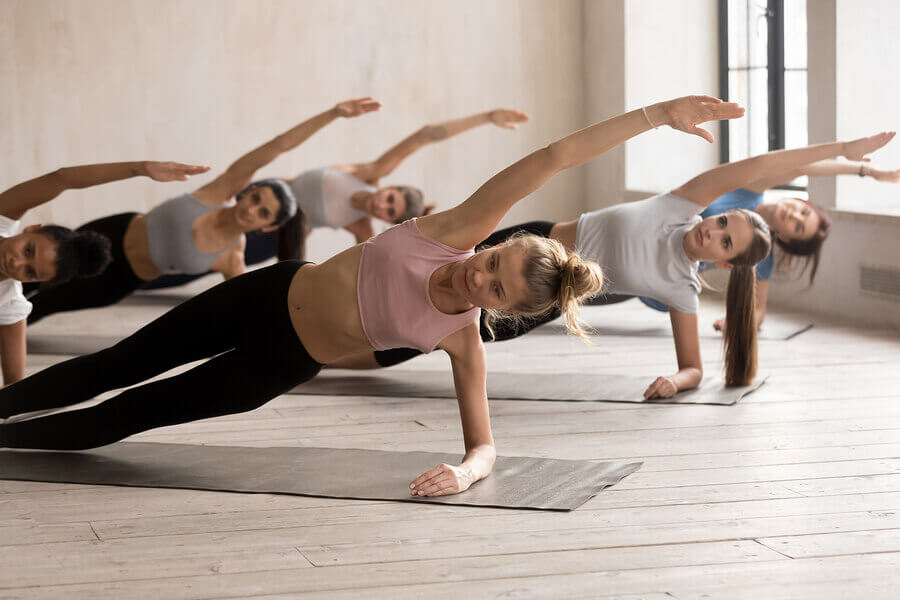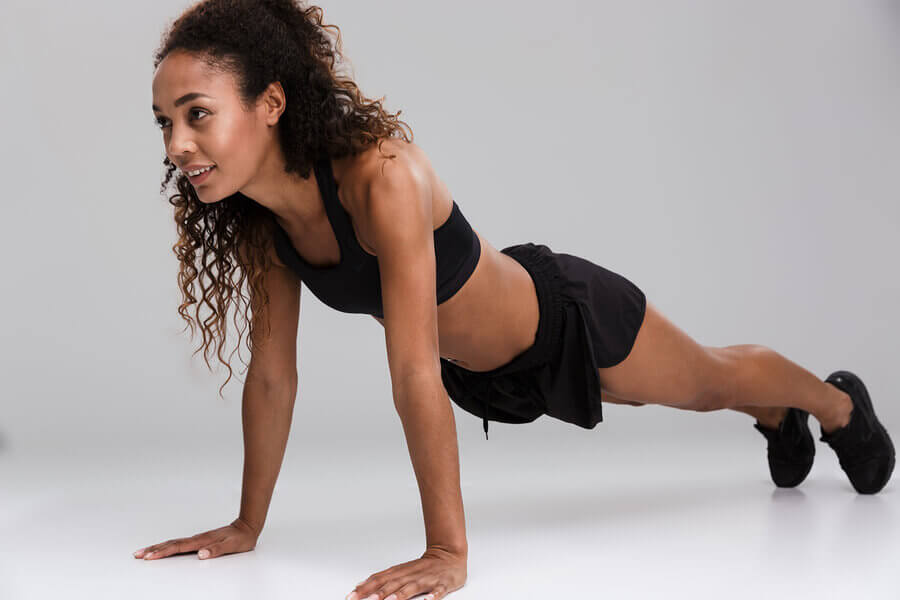Planking for a Strong Core

In our post today, let’s dive into the benefits of planking exercises for a strong core. Before we get into the details, we first want to contextualize and understand what the core exactly is. By understanding the core, we can understand its connection to athletic performance and injury prevention. We’ll also take a look at its main function for your body.
What is your core?
You won’t find this term in traditional anatomy books. The core is a functional concept that refers to the group of muscular and osteoarticular structures in the trunk of the body.
The concept is most commonly used in a sports context. The structures that compose the core act as a group to both maintain stability and generate or shift force; essentially, it’s the main gear of the human body.
Considering its function and application in physical activity, some people define it as “the capacity to control the upper body’s posture and movement over the pelvis, allowing for the optimal production, transfer, and control of strength and movement towards distal elements of the kinetic chains that lead to exercise.”
The core is composed of the abdominal, lower back and pelvic muscles as well as the glutes and deeper musculature of the spine and abdomen. Its main role is stabilizing the body.

Planking exercises
What is planking?
Before diving into the benefits that planking can offer the body, first, let’s understand what this exercise exactly is. In the world of sport, planking is an exercise that aims to strengthen the body’s core.
Planking means lifting your body to form a bridge, distributing your weight among your toes and forearms, elbows or hands depending on the intensity of your workout.
Benefits of planking for a strong core
Considering and challenging the vision of different voices in this field, we want to highlight the following benefits that planking can offer:
- Develops central stability to improve the stability of the upper and lower body limbs. In addition, planking also strengthens them for other physical activities.
- Improves coordination (muscle coactivation), which results in improved muscle activation, firmness, and stability.
- Optimizes physical performance by developing muscle the muscle characteristics that make up the core structure. Planking especially enhances strength and endurance.
- Improves flexibility in the muscle group.

- Can help prevent injuries. For example, planking gives us better neuromuscular control of the core region. Lacking said control is actually a risk factor for lumbar injuries.
- Planking is an important exercise to help secure active stability of the lumbar area. It also helps prevent and treats lower back pain. Thus, planking mainly aims to challenge and stimulate the motor system to better stabilize the area.
Lastly, we can’t forget to mention that planking, as well as the other exercises that focus on the core, are great for working out this area because they exercise various muscle groups at the same time. Try planking and reap the benefits for yourself!
In our post today, let’s dive into the benefits of planking exercises for a strong core. Before we get into the details, we first want to contextualize and understand what the core exactly is. By understanding the core, we can understand its connection to athletic performance and injury prevention. We’ll also take a look at its main function for your body.
What is your core?
You won’t find this term in traditional anatomy books. The core is a functional concept that refers to the group of muscular and osteoarticular structures in the trunk of the body.
The concept is most commonly used in a sports context. The structures that compose the core act as a group to both maintain stability and generate or shift force; essentially, it’s the main gear of the human body.
Considering its function and application in physical activity, some people define it as “the capacity to control the upper body’s posture and movement over the pelvis, allowing for the optimal production, transfer, and control of strength and movement towards distal elements of the kinetic chains that lead to exercise.”
The core is composed of the abdominal, lower back and pelvic muscles as well as the glutes and deeper musculature of the spine and abdomen. Its main role is stabilizing the body.

Planking exercises
What is planking?
Before diving into the benefits that planking can offer the body, first, let’s understand what this exercise exactly is. In the world of sport, planking is an exercise that aims to strengthen the body’s core.
Planking means lifting your body to form a bridge, distributing your weight among your toes and forearms, elbows or hands depending on the intensity of your workout.
Benefits of planking for a strong core
Considering and challenging the vision of different voices in this field, we want to highlight the following benefits that planking can offer:
- Develops central stability to improve the stability of the upper and lower body limbs. In addition, planking also strengthens them for other physical activities.
- Improves coordination (muscle coactivation), which results in improved muscle activation, firmness, and stability.
- Optimizes physical performance by developing muscle the muscle characteristics that make up the core structure. Planking especially enhances strength and endurance.
- Improves flexibility in the muscle group.

- Can help prevent injuries. For example, planking gives us better neuromuscular control of the core region. Lacking said control is actually a risk factor for lumbar injuries.
- Planking is an important exercise to help secure active stability of the lumbar area. It also helps prevent and treats lower back pain. Thus, planking mainly aims to challenge and stimulate the motor system to better stabilize the area.
Lastly, we can’t forget to mention that planking, as well as the other exercises that focus on the core, are great for working out this area because they exercise various muscle groups at the same time. Try planking and reap the benefits for yourself!
All cited sources were thoroughly reviewed by our team to ensure their quality, reliability, currency, and validity. The bibliography of this article was considered reliable and of academic or scientific accuracy.
- Kibler, W.B., Press, J., Sciascia, A. (2006). The role of core stability in athletic function. Sports Med 2006; 36(3):189-98.
- Vera-García, F.J., Barbado, D., Moreno-Pérez, V., Herández-Sánchez S., Juan-Recio, C., Elvira, J.L.L. (2015). Core Stability. Concepto y aportaciones al entrenamiento y la prevención de lesiones. Rev. Andal. Med. Deporte. 2015; 8 (2): 79-85.
- Vera-García, F.J., Barbado, D., Moreno-Pérez, V., Herández-Sánchez S., Juan-Recio, C., Elvira, J.L.L. (2015). Core Stability. Evaluación y criterios para su entrenamiento. Rev. Andal. Med. Deporte. 2015; 8 (3): 130-137.
- Miñarro, P. (2015). Implicaciones en la prevención de patologías y tratamiento en ámbito escolar. Mooc UCAM.
This text is provided for informational purposes only and does not replace consultation with a professional. If in doubt, consult your specialist.








